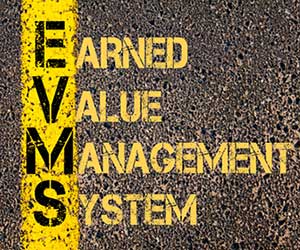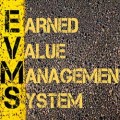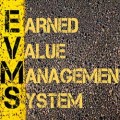
In project management, getting an early indication of problems is the silver bullet that allows the project manager to correct the problems before they start.
Cost Variance, usually abbreviated as CV, is one of the fundamental outputs of the Earned Value Management System. It tells the project manager how far ahead or behind the projects is at the point of analysis, usually right now.
Formula
Where:
- CV = Cost Variance
- EV = Earned Value
- AC = Actual Cost
All units are monetary (dollars, euros, etc.). See below for an explanation of each term.
Interpretation of Results
- If CV is negative, the task is over budget.
- If CV is zero, the task is on budget.
- If CV is positive, the task is under budget.
For example,
- CV = -$1,000 means the project is over budget.
- CV = $0 means the project is right on budget.
- CV = $1,000 means the project is under budget.
Background
Cost Variance represents how far the project is over or under budget relative to the work performed. For example, let’s say the task Build Fence has a budget of $4,000 and the cost variance is $1,000. This would represent a project that is significantly under budget.
Cost variance must be calculated on a task by task basis and summed to determine the overall project’s cost variance.
It must have a time point of reference, in other words, it is a “snapshot” at a certain point in time. Whenever the project is being worked on the cost variance is changing. To put it another way, the project is getting more over or under budget as time goes on and as work goes on.
Related Earned Value Metrics
The cost variance should be analyzed in conjunction with the schedule variance (SV), which tells you how far ahead or behind schedule the project is.
- CV and SV are positive: The project is under budget and ahead of schedule (hooray!)
- CV is positive and SV is negative: The project is under budget but behind schedule. In other words, the tasks performed were efficient, but more of them should have been performed by now.
- CV is negative and SV is positive: The project is over budget but ahead of schedule. In other words, the tasks performed are over budget, but more of them have been performed than scheduled.
- CV and SV are negative: The project is over budget and behind schedule (boo!)
The Cost Performance Index (CPI) is similar to CV but is relative to the task budget. It gives you an idea how far over or under budget the task is relative to the overall task budget. As you can imagine, a -$500 cost variance is insignificant to a billion dollar oil platform project but quite significant to a $4,000 fence building project.
Cost Baseline
In order to calculate the cost variance, the project must initially be divided into tasks and each task must be assigned the following data:
- Start and Finish Dates
- Budget
This is called the cost baseline, and it gives the project manager something to track against. Project scheduling is one of the fundamental aspects of project management.
Earned Value (EV)
Also known as Budgeted Cost of Work Performed (BCWP), Earned Value is the amount of the task that is actually completed. It is calculated from the project budget.
For example, if the actual percent complete is 75% and the task budget is $4,000, EV = 75% x $4,000 = $3,000.
Actual Cost (AC)
Also known as Actual Cost of Work Performed (ACWP), Actual Cost is the amount that has been spent on the task. It should include values for labor, materials, equipment, and any other item of cost that was necessary to complete the task.
For example, if the actual cost is $500 for lumber and $2,000 for labor, AC = $500 + $2,000 = $2,500.
Example
Let’s say we have a project with two tasks, building a fence and laying sod. The initial cost baseline is:
| ID | Task | Start date | End Date | Budget |
|---|---|---|---|---|
| 100 | Build Fence | Feb. 10 | Feb. 20 | $4,000 |
| 200 | Lay Sod | Feb. 12 | Feb. 25 | $3,000 |
| TOTAL | $7,000 | |||
Let’s say it’s Feb. 15. Determine the Cost Variance for the project.
Step 1: Determine the percent complete for each task. Since this is not a real project we will assume the tasks are 75% and 10% complete, respectively.
We will add a percent complete column to the table.
| ID | Task | Start date | End Date | Budget | % Complete |
|---|---|---|---|---|---|
| 100 | Build Fence | Feb. 10 | Feb. 20 | $4,000 | 75% |
| 200 | Lay Sod | Feb. 12 | Feb. 25 | $3,000 | 10% |
| TOTAL | $7,000 | ||||
Step 2: Determine Earned Value (EV)
Task 100 is 75% complete, therefore EV = 75% x $4,000 = $3,000.
Task 200 is 10% complete, therefore EV = 10% x $3,000 = $300.
Next we will add a column called EV.
| ID | Task | Start date | End Date | Budget | % Complete | EV |
|---|---|---|---|---|---|---|
| 100 | Build Fence | Feb. 10 | Feb. 20 | $4,000 | 75% | $3,000 |
| 200 | Lay Sod | Feb. 12 | Feb. 25 | $3,000 | 10% | $300 |
| TOTAL | $7,000 | |||||
Step 3: Determine Actual Cost (AC).
We will assume that Task 100 has an actual cost of $2,500, and Task 200 has an actual cost of $400.
Now we will add a column called AC.
| ID | Task | Start date | End Date | Budget | % Complete | EV | AC |
|---|---|---|---|---|---|---|---|
| 100 | Build Fence | Feb. 10 | Feb. 20 | $4,000 | 75% | $3,000 | $2,500 |
| 200 | Lay Sod | Feb. 12 | Feb. 25 | $3,000 | 10% | $300 | $400 |
| TOTAL | $7,000 | ||||||
Step 4: Determine Cost Variance (CV)
CV = EV – AC.
| ID | Task | Start date | End Date | Budget | % Complete | EV | AC | CV |
|---|---|---|---|---|---|---|---|---|
| 100 | Build Fence | Feb. 10 | Feb. 20 | $4,000 | 75% | $3,000 | $2,500 | $500 |
| 200 | Lay Sod | Feb. 12 | Feb. 25 | $3,000 | 10% | $300 | $400 | -$100 |
| TOTAL | $7,000 | $400 | ||||||
The overall project cost variance is positive $400, therefore the project is under budget. Even though the second task is over budget, the second task is under budget by a greater amount, therefore the project is in good shape overall.






